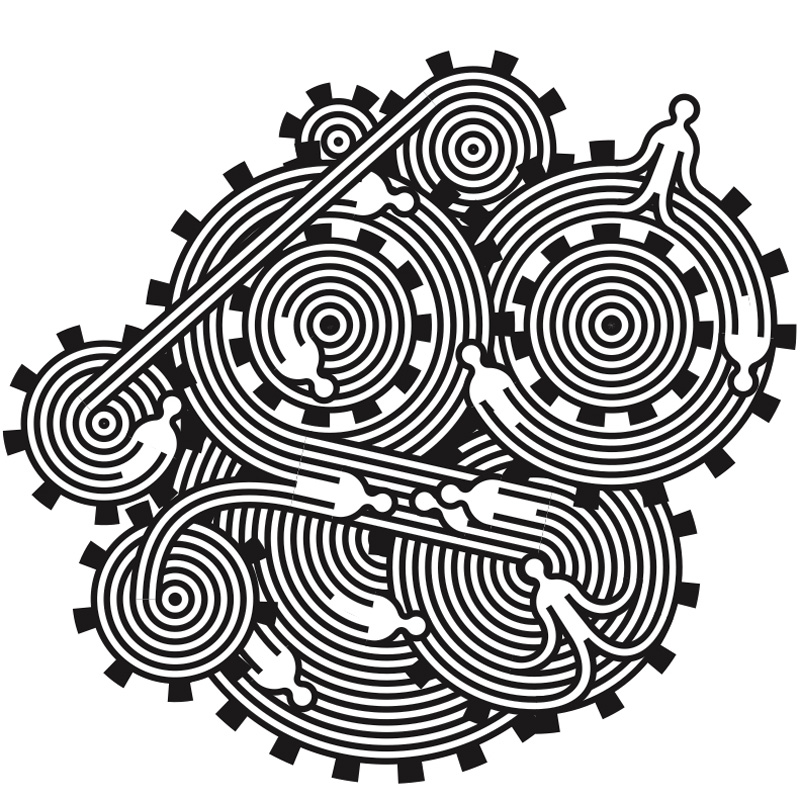Difference between revisions of "Reflection about the future of innovation"
m |
m |
||
| Line 8: | Line 8: | ||
<p></p> | <p></p> | ||
<p>The above [[ideograms|<em>ideogram</em>]] resulted when we asked our communication design team to create a way to help people see themselves as part of a system. And that the structure of that system <em>determines</em> both the quality of their lives and the effects and value of their work. The original version was animated. </p> | <p>The above [[ideograms|<em>ideogram</em>]] resulted when we asked our communication design team to create a way to help people see themselves as part of a system. And that the structure of that system <em>determines</em> both the quality of their lives and the effects and value of their work. The original version was animated. </p> | ||
| − | <p> So imagine a [[system|<em>system</em>]] as a large machine, comprising technology <em>and</em> people. Think of its role as taking everyone's daily work as input, and producing socially useful results as output. How well is it performing in | + | <p> So imagine a [[system|<em>system</em>]] as a large machine, comprising technology <em>and</em> people. Think of its role as taking everyone's daily work as input, and producing socially useful results as output. How well is it performing in its all-important task? How suitable is its structure? How much could its performance be improved by modifying its structure?</p> |
| − | <p>Take a look at your smartphone, and the fascinating amount of technological dexterity that | + | <p>Take a look at your smartphone, and think about the fascinating amount of technological dexterity that has been packed into such a tiny volume. Then consider the much <em>more</em> fascinating neglect by which those far more important 'mega-machines' have been treated.</p> |
| − | <p> | + | <p>How could this be possible?</p></div> |
</div> | </div> | ||
Revision as of 12:46, 27 October 2018
A reflection about the future of innovation
The system is us
The above ideogram resulted when we asked our communication design team to create a way to help people see themselves as part of a system. And that the structure of that system determines both the quality of their lives and the effects and value of their work. The original version was animated.
So imagine a system as a large machine, comprising technology and people. Think of its role as taking everyone's daily work as input, and producing socially useful results as output. How well is it performing in its all-important task? How suitable is its structure? How much could its performance be improved by modifying its structure?
Take a look at your smartphone, and think about the fascinating amount of technological dexterity that has been packed into such a tiny volume. Then consider the much more fascinating neglect by which those far more important 'mega-machines' have been treated.
How could this be possible?

